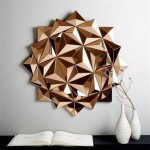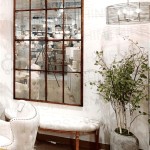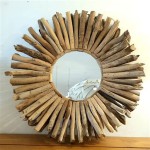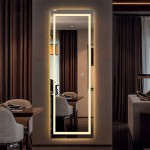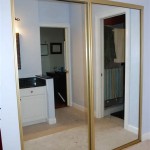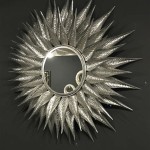The Alluring History of Sunburst Mirrors: A Timeless Reflection of Elegance
Since their introduction centuries ago, sunburst mirrors have captivated the world with their exquisite craftsmanship and timeless elegance. These decorative mirrors, characterized by their radiating, sun-like patterns, have adorned palaces, mansions, and humble abodes alike, reflecting the evolving tastes and aspirations of generations.
Origins and Symbolism: A Tapestry of Cultures
The origins of sunburst mirrors can be traced to various cultures and periods, each contributing unique elements to their design and symbolism. In ancient Greece and Rome, mirrors held religious and mythological significance, often associated with the sun god Apollo or the goddess Venus. These mirrors were intricately adorned with sun-like motifs, believed to protect against evil spirits and bring good fortune.
In the 17th century, sunburst mirrors gained prominence in Baroque and Rococo interiors. These mirrors, crafted from gilded wood or metal, exuded an aura of opulence and grandeur, reflecting the lavish tastes of the aristocracy. The radiating sunburst pattern symbolized divine light, enlightenment, and celestial energy.
Design Evolution: A Journey Through Styles
As artistic styles evolved, so did the design of sunburst mirrors. In the 18th century, Neoclassical mirrors emerged, featuring symmetrical frames with clean lines and delicate ornamentation. These mirrors often incorporated motifs inspired by ancient Greek and Roman art, echoing the revival of classical aesthetics.
The Victorian era brought forth sunburst mirrors with elaborate and ornate frames. These mirrors were often made of carved wood, featuring intricate floral patterns, scrolls, and cherubs. The sunburst motif continued to symbolize divine light and celestial energy, but it also conveyed a sense of romance and nostalgia.
Modern Interpretations: A Reflection of Contemporary Tastes
In the 20th century, sunburst mirrors underwent a transformation, embracing the principles of modernism and Art Deco. These mirrors featured sleek, geometric frames, often made of metal or glass. The sunburst pattern became more stylized and abstract, reflecting the changing aesthetic sensibilities of the era.
Today, sunburst mirrors continue to be a popular choice for interior designers and homeowners alike. They blend seamlessly with various design styles, from traditional to contemporary, offering a touch of elegance and timeless charm. Whether it's a vintage mirror with an ornate gilt frame or a modern mirror with a minimalist design, sunburst mirrors continue to captivate with their radiant beauty.
Conclusion: A Legacy of Elegance and Symbolism
Sunburst mirrors, with their rich history and captivating designs, have transcended time and trends. They embody the enduring human fascination with celestial bodies, symbolizing divine light, enlightenment, and celestial energy. Whether adorning the walls of a grand palace or adding a touch of elegance to a modern living room, sunburst mirrors continue to reflect our desire for beauty, light, and the enduring allure of the sun.

A Short History Of The Sunburst Mirror

History Of The Sunburst Mirror Talie Jane Interiors

Sunburst Mirrors What They Are Where Came From And Why We Love Them

A Short History Of The Sunburst Mirror

Sunburst Mirrors The Antiques Diva

Sunburst Mirrors What They Are Where Came From And Why We Love Them

Sunburst Mirrors Are The Omnipresent Home Decor I Can T Stop Noticing Vox
My Faux French Cau Pair Of Vintage Spanish Sunburst Mirrors

Sunburst Mirrors What They Are Where Came From And Why We Love Them

Timeless Or Trendy Sunburst Mirrors Centsational Style

